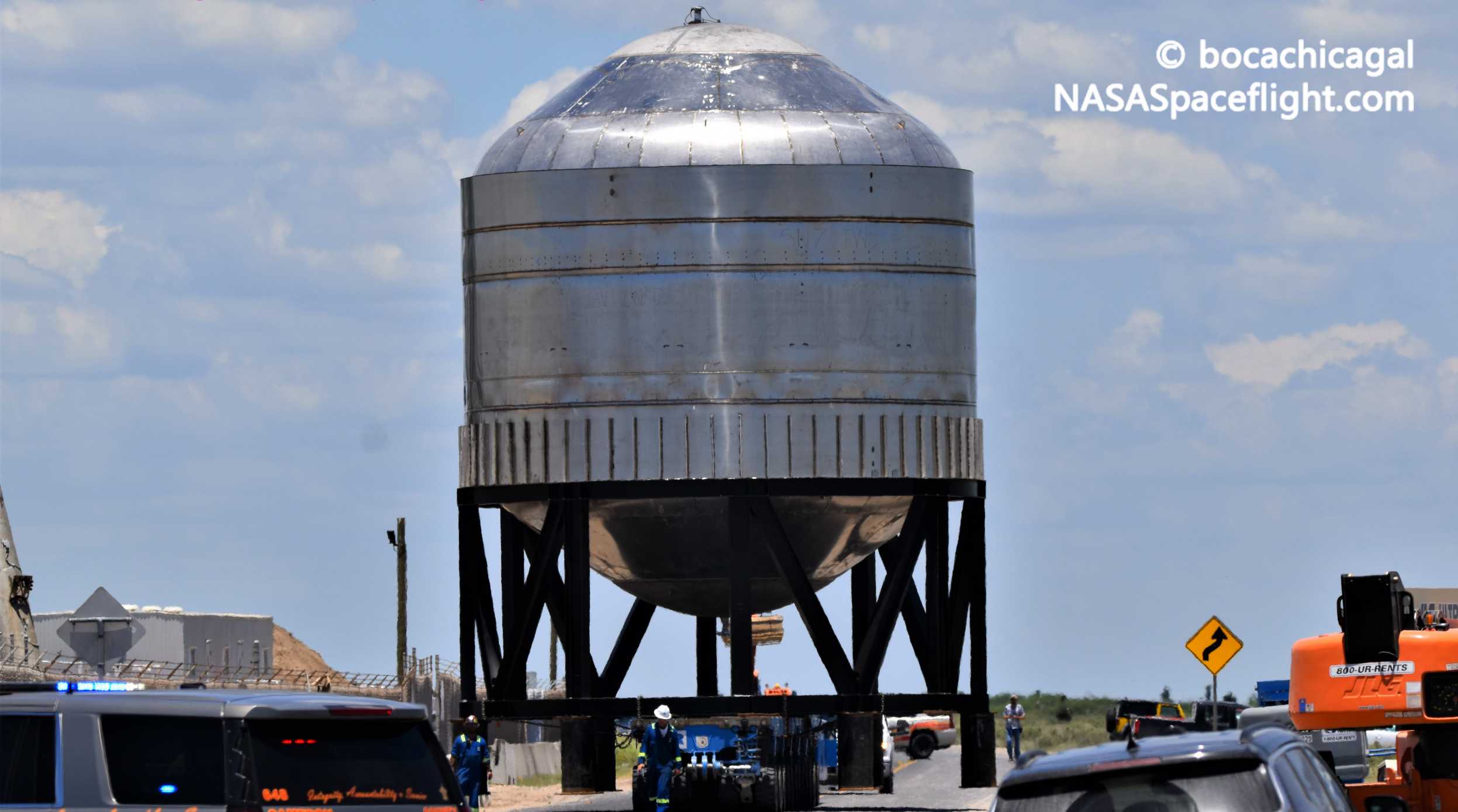
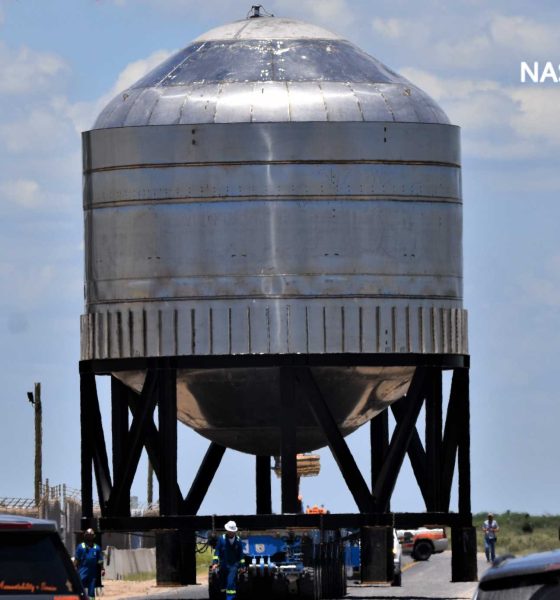
News
SpaceX’s Starship program returns to its roots with a new rocket ‘test tank’
SpaceX’s Starship rocket development program has returned to its early-2020 roots as teams work to assemble the first new ‘test tank’ built in South Texas in more than three months.
Just like its three predecessors, the newest test tank’s purpose is relatively simple: demonstrate – at full scale – the efficacy of SpaceX’s current manufacturing processes. Back when SpaceX built and tested the first two tank prototypes in January 2020, the company was in the midst of making big changes throughout its coastal Boca Chica, Texas Starship factory – a major leap forward compared to the methods used to build Starship Mk1. While the first tank made it to 7.1 bar (~103 psi) before failing, a second tank survived all the way up to 8.5 bar (~125 psi), as did a third separate test tank built about a month later. According to CEO Elon Musk, 8.5 bar is more than satisfactory for Starship pressure vessels to safely launch humans into orbit, offering a safety margin of more than 40%.
Most recently, Starship SN4 became the first full-scale prototype to replicate the results SpaceX achieved with its shorter test tanks, effortlessly reaching 7.5 bar (~110 psi) during a cryogenic pressure test completed just last month. Despite those myriad successes, however, SpaceX rarely stops moving forward and Musk has already hinted at improvements the company may be hoping to prove out with a fourth Starship test tank.
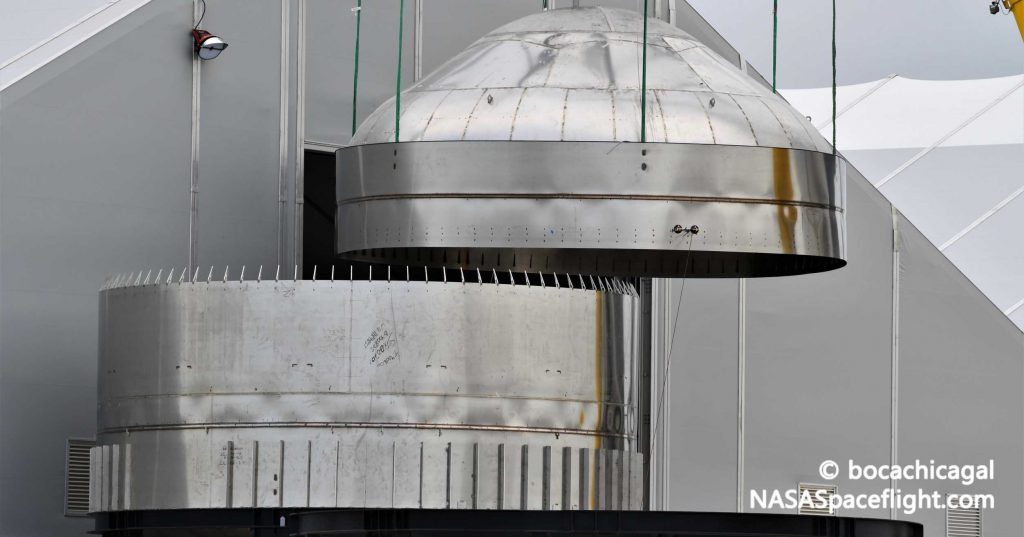
The most obvious reason to build a new test tank after the success of full-scale Starship prototype SN4 is a substantial change in the steel alloy SpaceX is building rockets out of in South Texas. CEO Elon Musk has teased such a shift for almost a full year and it appears to have happened right on time – if not ahead of schedule. SpaceX currently uses 301 stainless steel for Starship production, while the new material – discussed earlier by Musk and confirmed by inscriptions on the exterior of what would later become the fourth test tank – is a slightly different 304 steel “with higher ductility” (malleability).
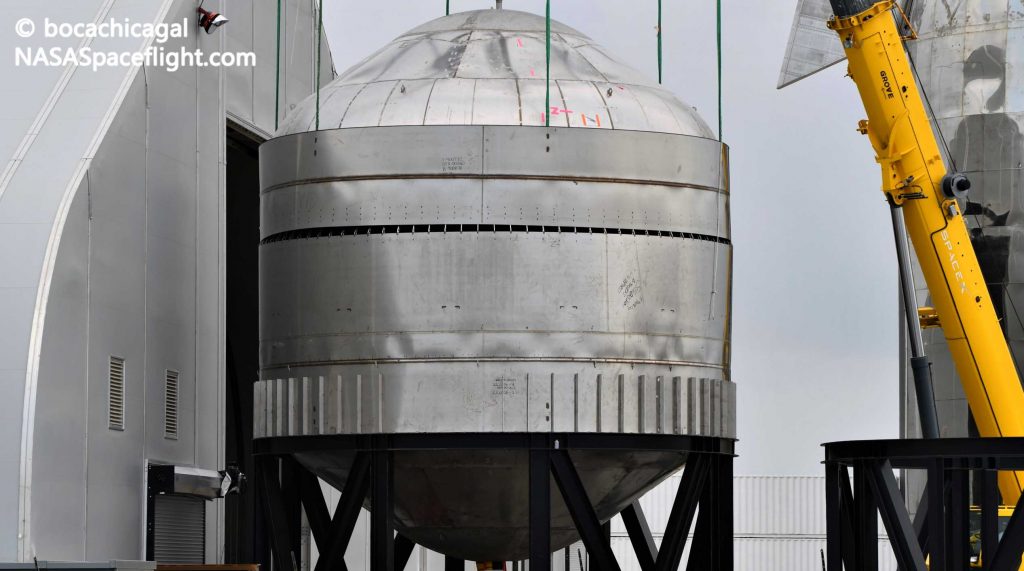
It’s unclear if this is the custom-built “30X” alloy SpaceX was planning on creating, given that “304L” steel is an already-available commodity material that is slightly more durable and corrosion-resistant but less ductile and ~10% more expensive than 301. Regardless, changing to a new alloy would almost certainly benefit from real-world testing to confirm that behaves in the ways SpaceX expects it to, while also verifying that existing fabrication methods (particularly welding) still suffice.
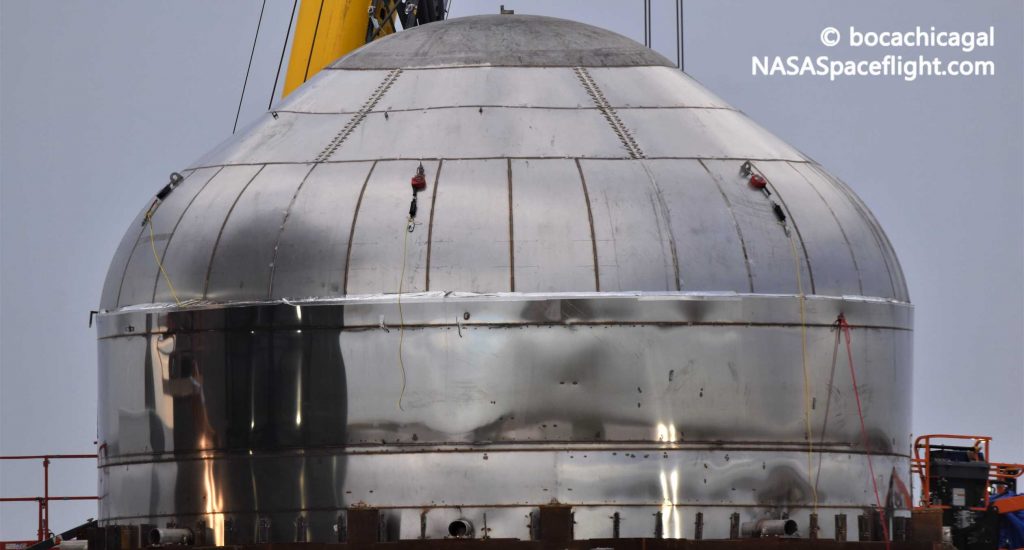

The only other notable visual differences between Starship Test Tank #4 and its predecessors are small changes in welding. On the new tank’s dome and ring, SpaceX has removed wavy strips of metal known as a weld doublers, used to strengthen vertical welds on all previous ships and test tanks. While only realizing miniscule weight savings, the change is a visual confirmation that SpaceX is growing more confident in its weld quality, perhaps also signifying the introduction of a new kind of welding.
Last but not least, the circumferential weld joining Test Tank #4’s dome and ring (a dark horizontal line) appears to be centered on the ring, whereas the domes of previous ships and tanks have typically been attached to the upper or lower 20-30% of their respective rings. The purpose of this change is unknown.
Regardless, Test Tank #4 is currently in the midst of an hours-long cryogenic proof test and appears to be almost fully loaded with several hundred tons of liquid nitrogen. Check out the frosty tank live at the link below as we wait to see if the Starship hardware survives.
Check out Teslarati’s Marketplace! We offer Tesla accessories, including for the Tesla Cybertruck and Tesla Model 3.

Elon Musk
Elon Musk and Tesla AI Director share insights after empty driver seat Robotaxi rides
The executives’ unoccupied tests hint at the rapid progress of Tesla’s unsupervised Robotaxi efforts.

Tesla CEO Elon Musk and AI Director Ashok Elluswamy celebrated Christmas Eve by sharing personal experiences with Robotaxi vehicles that had no safety monitor or occupant in the driver’s seat. Musk described the system’s “perfect driving” around Austin, while Elluswamy posted video from the back seat, calling it “an amazing experience.”
The executives’ unoccupied tests hint at the rapid progress of Tesla’s unsupervised Robotaxi efforts.
Elon and Ashok’s firsthand Robotaxi insights
Prior to Musk and the Tesla AI Director’s posts, sightings of unmanned Teslas navigating public roads were widely shared on social media. One such vehicle was spotted in Austin, Texas, which Elon Musk acknowleged by stating that “Testing is underway with no occupants in the car.”
Based on his Christmas Eve post, Musk seemed to have tested an unmanned Tesla himself. “A Tesla with no safety monitor in the car and me sitting in the passenger seat took me all around Austin on Sunday with perfect driving,” Musk wrote in his post.
Elluswamy responded with a 2-minute video showing himself in the rear of an unmanned Tesla. The video featured the vehicle’s empty front seats, as well as its smooth handling through real-world traffic. He captioned his video with the words, “It’s an amazing experience!”
Towards Unsupervised operations
During an xAI Hackathon earlier this month, Elon Musk mentioned that Tesla owed be removing Safety Monitors from its Robotaxis in Austin in just three weeks. “Unsupervised is pretty much solved at this point. So there will be Tesla Robotaxis operating in Austin with no one in them. Not even anyone in the passenger seat in about three weeks,” he said. Musk echoed similar estimates at the 2025 Annual Shareholder Meeting and the Q3 2025 earnings call.
Considering the insights that were posted Musk and Elluswamy, it does appear that Tesla is working hard towards operating its Robotaxis with no safety monitors. This is quite impressive considering that the service was launched just earlier this year.
Elon Musk
Starlink passes 9 million active customers just weeks after hitting 8 million
The milestone highlights the accelerating growth of Starlink, which has now been adding over 20,000 new users per day.

SpaceX’s Starlink satellite internet service has continued its rapid global expansion, surpassing 9 million active customers just weeks after crossing the 8 million mark.
The milestone highlights the accelerating growth of Starlink, which has now been adding over 20,000 new users per day.
9 million customers
In a post on X, SpaceX stated that Starlink now serves over 9 million active users across 155 countries, territories, and markets. The company reached 8 million customers in early November, meaning it added roughly 1 million subscribers in under seven weeks, or about 21,275 new users on average per day.
“Starlink is connecting more than 9M active customers with high-speed internet across 155 countries, territories, and many other markets,” Starlink wrote in a post on its official X account. SpaceX President Gwynne Shotwell also celebrated the milestone on X. “A huge thank you to all of our customers and congrats to the Starlink team for such an incredible product,” she wrote.
That growth rate reflects both rising demand for broadband in underserved regions and Starlink’s expanding satellite constellation, which now includes more than 9,000 low-Earth-orbit satellites designed to deliver high-speed, low-latency internet worldwide.
Starlink’s momentum
Starlink’s momentum has been building up. SpaceX reported 4.6 million Starlink customers in December 2024, followed by 7 million by August 2025, and 8 million customers in November. Independent data also suggests Starlink usage is rising sharply, with Cloudflare reporting that global web traffic from Starlink users more than doubled in 2025, as noted in an Insider report.
Starlink’s momentum is increasingly tied to SpaceX’s broader financial outlook. Elon Musk has said the satellite network is “by far” the company’s largest revenue driver, and reports suggest SpaceX may be positioning itself for an initial public offering as soon as next year, with valuations estimated as high as $1.5 trillion. Musk has also suggested in the past that Starlink could have its own IPO in the future.
News
NVIDIA Director of Robotics: Tesla FSD v14 is the first AI to pass the “Physical Turing Test”
After testing FSD v14, Fan stated that his experience with FSD felt magical at first, but it soon started to feel like a routine.

NVIDIA Director of Robotics Jim Fan has praised Tesla’s Full Self-Driving (Supervised) v14 as the first AI to pass what he described as a “Physical Turing Test.”
After testing FSD v14, Fan stated that his experience with FSD felt magical at first, but it soon started to feel like a routine. And just like smartphones today, removing it now would “actively hurt.”
Jim Fan’s hands-on FSD v14 impressions
Fan, a leading researcher in embodied AI who is currently solving Physical AI at NVIDIA and spearheading the company’s Project GR00T initiative, noted that he actually was late to the Tesla game. He was, however, one of the first to try out FSD v14.
“I was very late to own a Tesla but among the earliest to try out FSD v14. It’s perhaps the first time I experience an AI that passes the Physical Turing Test: after a long day at work, you press a button, lay back, and couldn’t tell if a neural net or a human drove you home,” Fan wrote in a post on X.
Fan added: “Despite knowing exactly how robot learning works, I still find it magical watching the steering wheel turn by itself. First it feels surreal, next it becomes routine. Then, like the smartphone, taking it away actively hurts. This is how humanity gets rewired and glued to god-like technologies.”
The Physical Turing Test
The original Turing Test was conceived by Alan Turing in 1950, and it was aimed at determining if a machine could exhibit behavior that is equivalent to or indistinguishable from a human. By focusing on text-based conversations, the original Turing Test set a high bar for natural language processing and machine learning.
This test has been passed by today’s large language models. However, the capability to converse in a humanlike manner is a completely different challenge from performing real-world problem-solving or physical interactions. Thus, Fan introduced the Physical Turing Test, which challenges AI systems to demonstrate intelligence through physical actions.
Based on Fan’s comments, Tesla has demonstrated these intelligent physical actions with FSD v14. Elon Musk agreed with the NVIDIA executive, stating in a post on X that with FSD v14, “you can sense the sentience maturing.” Musk also praised Tesla AI, calling it the best “real-world AI” today.








